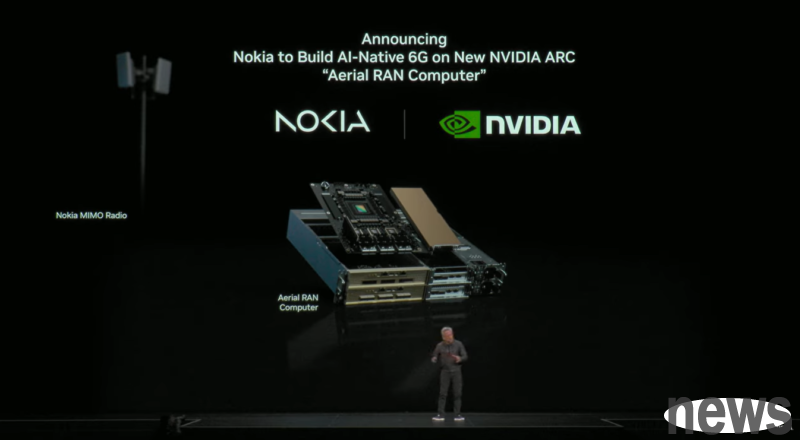American chip maker NVIDIA (Nvidia) announced plans to invest US$1 billion in Finnish telecom operator Nokia (Nokia). This move not only marks NVIDIA's extension of its large-scale transaction strategy, but also makes the American GPU leader one...

American chip maker NVIDIA (Nvidia) announced plans to invest US$1 billion in Finnish telecom operator Nokia (Nokia). This move not only marks NVIDIA's extension of its large-scale transaction strategy, but also makes the American GPU leader one of Nokia's largest shareholders and strongly endorses Nokia's strategy of expanding into the AI field.
This strategic investment will see the two companies integrate AI in telecom networks and collaborate on data center infrastructure. In return, Nokia will issue 166,389,351 new shares directly to NVIDIA, giving NVIDIA a 2.9% stake in Nokia. As soon as the news came out, Nokia's stock price soared 21% on the afternoon of the 28th, reaching a 10-year high. The rally added €6.7 billion to its market value. The strong performance further propelled the company that once dominated the early mobile phone industry into an unexpected comeback.
NVIDIA's investment is seen as a strong proof of Nokia's strategy. Nokia is actively diversifying away from network infrastructure business and seeking faster growth from AI and cloud services. According to the agreement, Nokia will use NVIDIA's technology to upgrade its 5G and 6G networks. Nokia's current goal is to make breakthroughs in the development of next-generation 6G technology, known as "ultra-fast wireless technology."
In fact, the core of the cooperation between NVIDIA and Nokia lies in integrating AI into wireless networks, the so-called "AI-RAN" technology. Integrating AI into wireless networks can make them faster and more efficient, and enable network operators to better monitor traffic, manage energy consumption, and allocate spectrum. NVIDIA also cited data from analyst firm Omdia that the AI-RAN technology market is expected to reach US$200 billion by 2030. As for, on a technical level, Nokia will use new computers based on NVIDIA's latest Blackwell graphics processor (GPU) to upgrade its wireless network.
NVIDIA CEO Jensen Huang stated at the GTC conference in Washington that cooperation with Nokia will help advance U.S. interests and ensure that wireless technology can run on U.S. hardware. He also emphasized that although telecommunications technology is the "lifeblood" of industry and national security, most wireless technologies currently run on foreign hardware. So this has to stop.
Nokia made a name for itself in the 2000s with its popular range of mobile phones. However, in the smartphone era, it was surpassed by Apple's iPhone and Samsung's Galaxy devices. Nokia's attempt to partner with Microsoft to launch the Lumia smartphone was abandoned after failing to gain traction with consumers. Nokia then focused its efforts on telecom network infrastructure to compete with Chinese suppliers such as Huawei and ZTE.
As for NVIDIA, this cooperation with Nokia is the latest in a series of recent transactions. Other NVIDIA investment layouts include key areas. For example, in September 2025, NVIDIA announced plans to continue investing $100 billion in OpenAI in the future as part of a joint effort to build the data center required for AI.
Intel also invested US$5 billion in the troubled company. This action is considered to support the U.S. Trump administration’s initiative to improve domestic chip manufacturing capabilities. NVIDIA has also recently made investments in its customers, including a £500 million investment in UK-based Nscale. Even NVIDIA participated in the latest round of financing for AI infrastructure company Crusoe, which has a valuation of more than $10 billion.